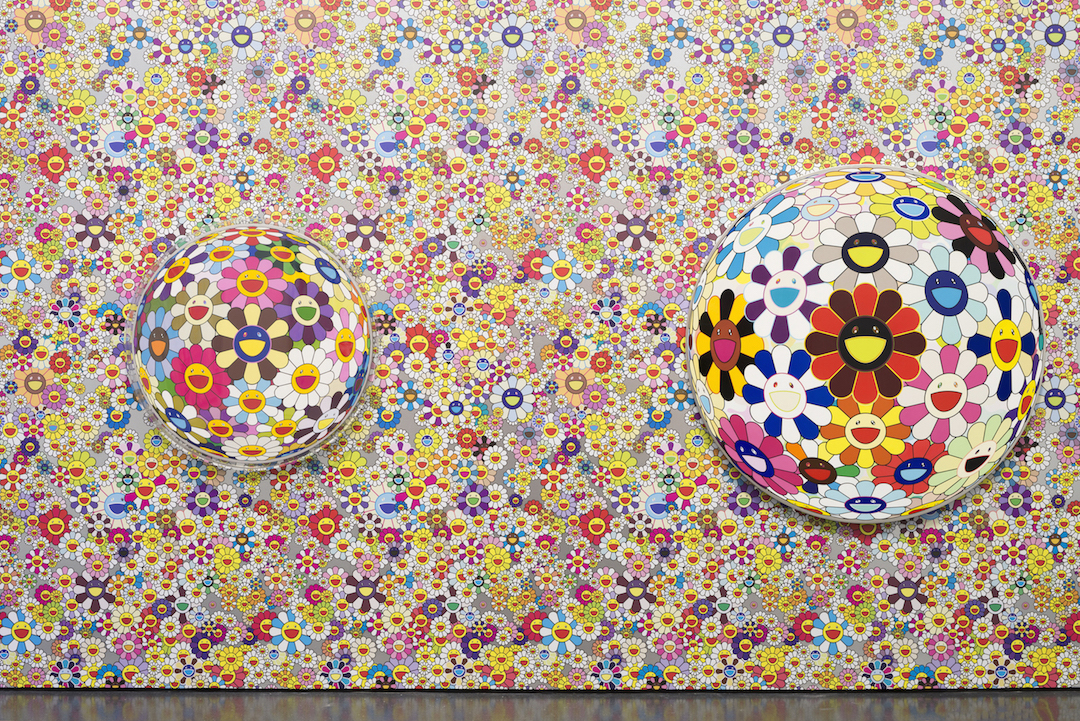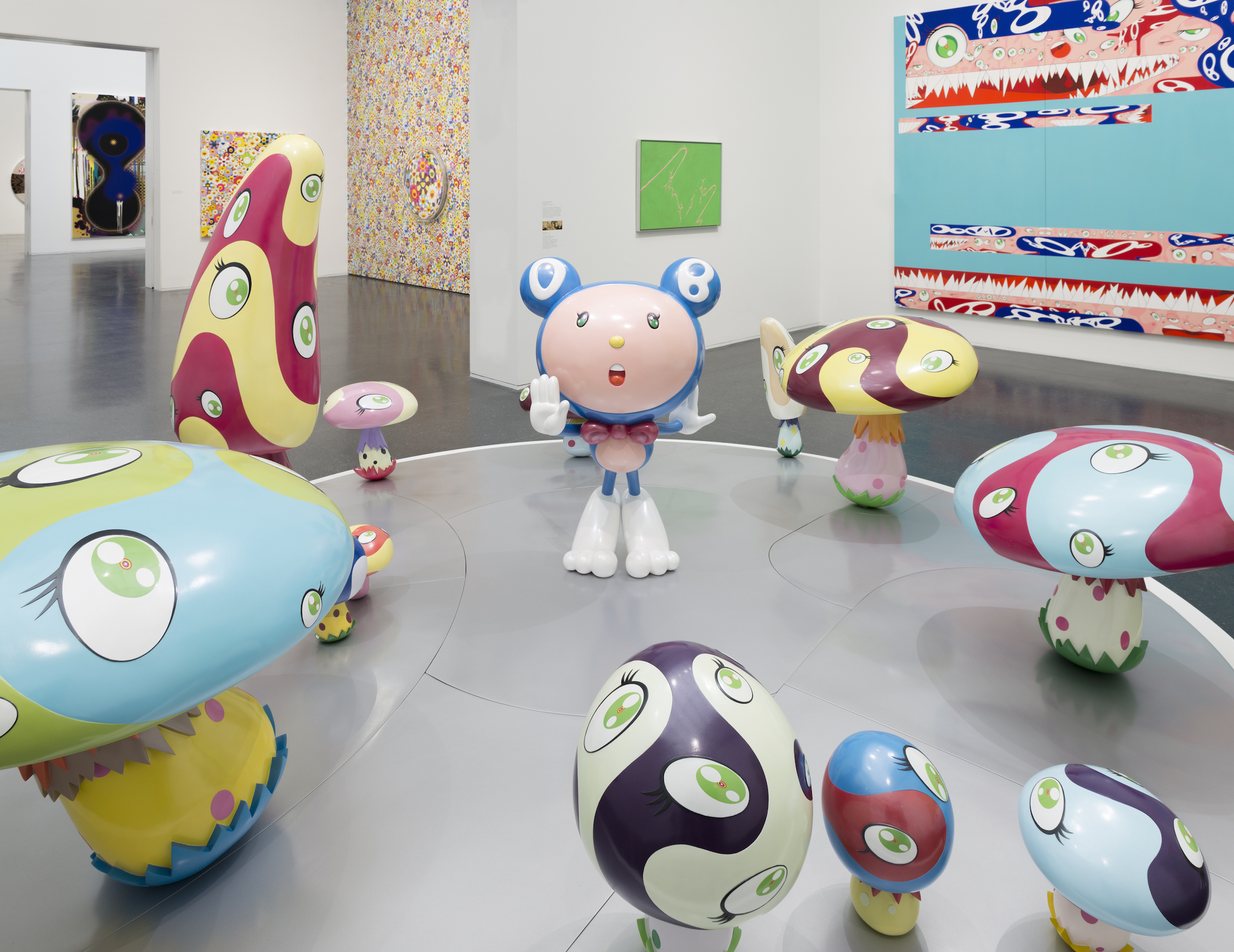
It’s an exciting time for retrospectives at the Museum of Contemporary Art Chicago (MCA); last April the museum hosted a six-month long exhibition of the work of Kerry James Marshall and this year, it has chosen to focus on Takashi Murakami, who is considered one of Japan’s greatest living artists.
“The Octopus Eats its Own Leg,” which opened to the public on June 6, is a stunning survey of Murakami’s work. The artist, who garnered attention after collaborating with the likes of Kanye West and Louis Vuitton, blurs the lines between high and low art, gallery worthy pieces and commercial endeavors, and the position of flatness and emptiness in illustration.
Murakami first entered the art world in the 1990s after developing his Superflat theory. The theory, which he describes in a short video screened at the entrance of his MCA exhibition, stems from the flatness found in modern anime and manga as well as historic Japanese prints. In applying this theory, Murakami aims to depict space while retaining flatness and achieving emptiness. In the exhibition’s opening video, Murakami explains that “the greatest art piece is, I thought, emptiness.”

Throughout his career, Murakami regularly rejected the distinctions between high art and commercial work in the Western art world. He began this process by applying the highly commercialized illustration style of anime to his work. His efforts to blend commercial and high art allowed him to take on a Louis Vuitton collaboration that not only highly publicized his name and work, but permanently altered the importance of the logo in the fashion industry. That’s right, those SS 2003 Louis Vuitton bags with rainbow logos, the ones you dreamed of carrying with your velour tracksuit, are Takashi Murakami pieces.
In 2007, Murakami worked with Kanye West to design the album artwork for “Graduation.” Murakami reportedly called West “difficult because every week Kanye has new ideas.” The work features a bear dressed as Kanye and is on display in multiple forms throughout the MCA’s show.
Though Murakami’s Louis Vuitton bags are not a part of the exhibition, his smiling flowers certainly are. The MCA didn’t hesitate to capitalize on their popularity: they covered an entire room in them. Murakami designed the flowers, which are displayed in multiple facets including silver wallpaper, while studying for entrance exams to the Tokyo National University of Fine Arts. They were later featured on rugs sold at Art Basel and have become one of the artist’s most famous motifs.
The MCA’s exhibition ends with a display of Murakami’s post-tsunami works about Arhats. The large scale pieces were created in 2012 as a token of gratitude for Qatar after they provided aid to Japan in the wake of the Great East Japan Earthquake and Tsunami in 2011. One work in particular, “500 Arhats,” is a 100-meter long painting and considered one of the largest artworks ever created. Murakami’s Arhat series also features works painted by the artist himself, who typically employs Japanese art students to do the majority of his physical work.

“The Octopus Eats It’s Own Leg,” from the point-of-view of a struggling art student, can be validating. Murakami retains the title of “serious” artist and art theorist while still taking advantage of commercial opportunities. Art schools often encourage their students to separate commercial and “real” art when in reality, it’s unsustainable and unrealistic to expect young artists to make work without concern for cost or profit. Murakami’s message was a reminder that selling your work isn’t shameful and neither is wanting to make a living.
Murakami’s exploration of contemporary Japanese animation in conjunction with traditional Japanese prints, and his blending of fine art and commercial art practices can be seen at the Museum of Contemporary Art Chicago until September 24, 2017. Tickets are free for SAIC students with their school ID.







